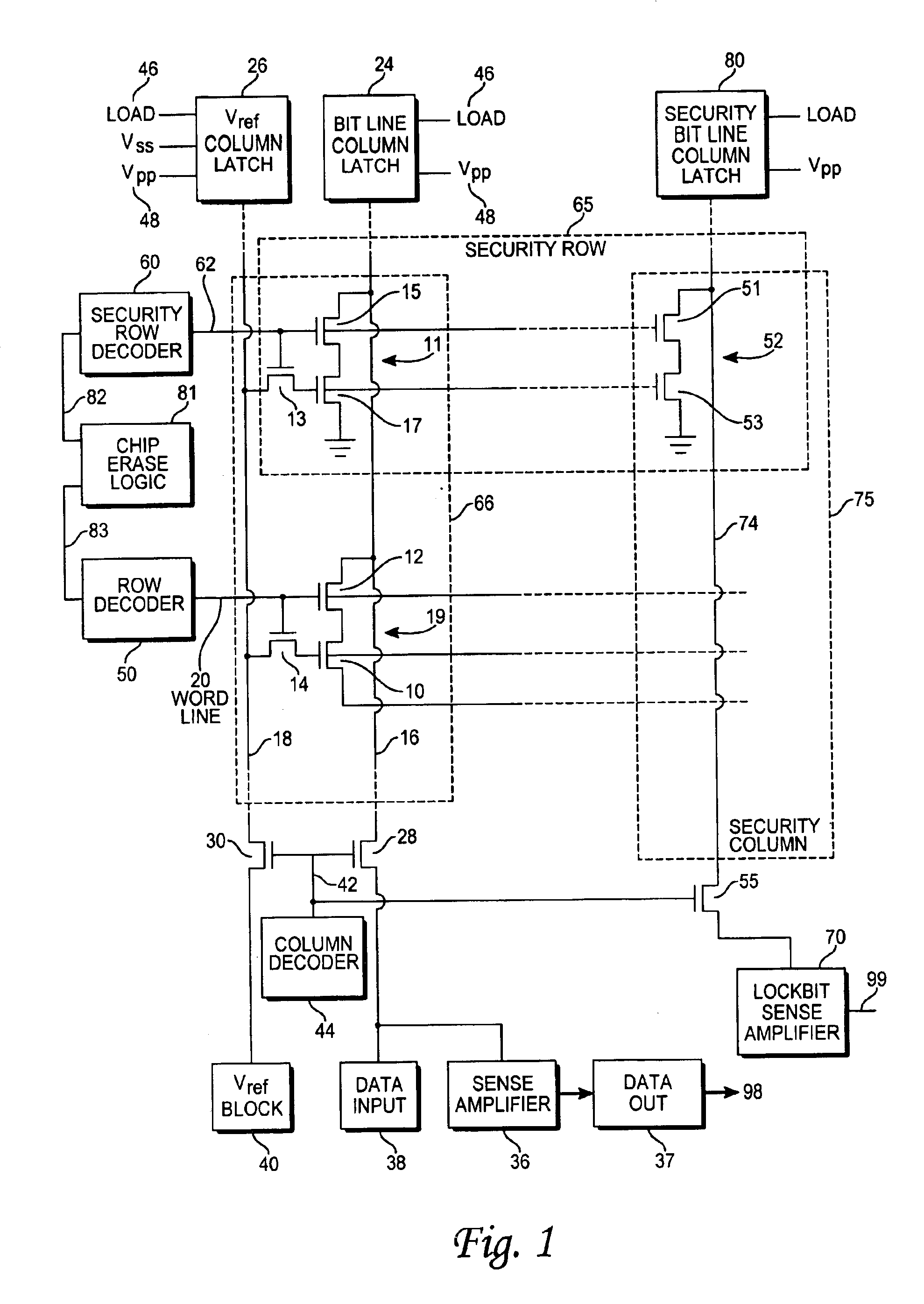Embedded memory with security row lock protection
- Summary
- Abstract
- Description
- Claims
- Application Information
AI Technical Summary
Benefits of technology
Problems solved by technology
Method used
Image
Examples
Embodiment Construction
With reference to FIG. 1, a semiconductor memory incorporating an exemplary embodiment of the present invention is shown. The semiconductor memory element shown in FIG. 1 is an electrically erasable and programmable non-volatile memory cell (EEPROM), but the invention can be implemented by one of ordinary skill into other types of non-volatile memory cells, such as, for example, a flash memory cell. In the EEPROM array of FIG. 1, each floating gate transistor 10 is paired up with an access transistor 12, forming a memory cell 19, in which the source of the access transistor 12 is connected to the drain of the floating gate transistor 10. Each of the memory cells are arranged into a memory array structure, with the various bit lines 16 and word lines 20 arranged in an array as shown in FIG. 1. The drain of the access transistor 12 taps into a bit line 16 that is common to the drains of all of the access transistors 12 in the same column 66. A bit line column latch 24 is connected to ...
PUM
 Login to View More
Login to View More Abstract
Description
Claims
Application Information
 Login to View More
Login to View More - R&D
- Intellectual Property
- Life Sciences
- Materials
- Tech Scout
- Unparalleled Data Quality
- Higher Quality Content
- 60% Fewer Hallucinations
Browse by: Latest US Patents, China's latest patents, Technical Efficacy Thesaurus, Application Domain, Technology Topic, Popular Technical Reports.
© 2025 PatSnap. All rights reserved.Legal|Privacy policy|Modern Slavery Act Transparency Statement|Sitemap|About US| Contact US: help@patsnap.com


